Travel within the Schengen Area
“The Schengen Area is a zone comprised of 29 European states which have officially abolished passports and other types of border control at their mutual borders. For visitors to the EU, it effectively means that the Schengen Area acts as a singular country, i.e. once you enter one Schengen country you have entered them all.” See ETIAS Visa for more information.
You can find a list of the Schengen area countries here.
Residence
With a South African passport and a Schengen residence permit (Aufenthalt or Niederlassungserlaubnis), you may travel freely within the Schengen Area for as long as your residence permit is valid. Please also check for any restrictions for example your residence is only valid for Germany.
More information in Article 6 of the Regulation (EU) 2016/399 of the European Parliament available on EUR-LEX
Visas
Single-entry visa
A single-entry visa allows its holder to enter the Schengen Area only once, within the given period, as mentioned in the visa sticker affixed to their passport. Once the visa holder exits the Schengen territory, he or she can no longer go back, even if they have not spent there the number of days as permitted by the embassy that issued them the visa.
Some people confuse the single-entry visa, thinking that it is about the number of countries the visa holder is permitted to visit and that it allows them to enter one single country. The territory you are permitted to visit is given close to the “Valid for” tag on your visa sticker, whereas the time you are allowed to stay is given close to the “Number of entries” tag.
Multiple-entry visa
A multiple-entry visa allows its holder to go in and out of the Schengen Area as many times as he or she wants, as soon as they do not violate the 90/180 rule.
Based on how frequently you travel to the Schengen zone, you may apply and obtain one of the following multiple-entry visa types:
- 1-year multiple-entry visa
- 3-year multiple-entry visa
- 5-year multiple-entry visa
- Gültig für/Valid for – Is it valid only for Germany or for the Schengen states
- Remarks – for example the reason for your visit and any restrictions.
- Number of entries – MULT (Multiple) double, or Single entry
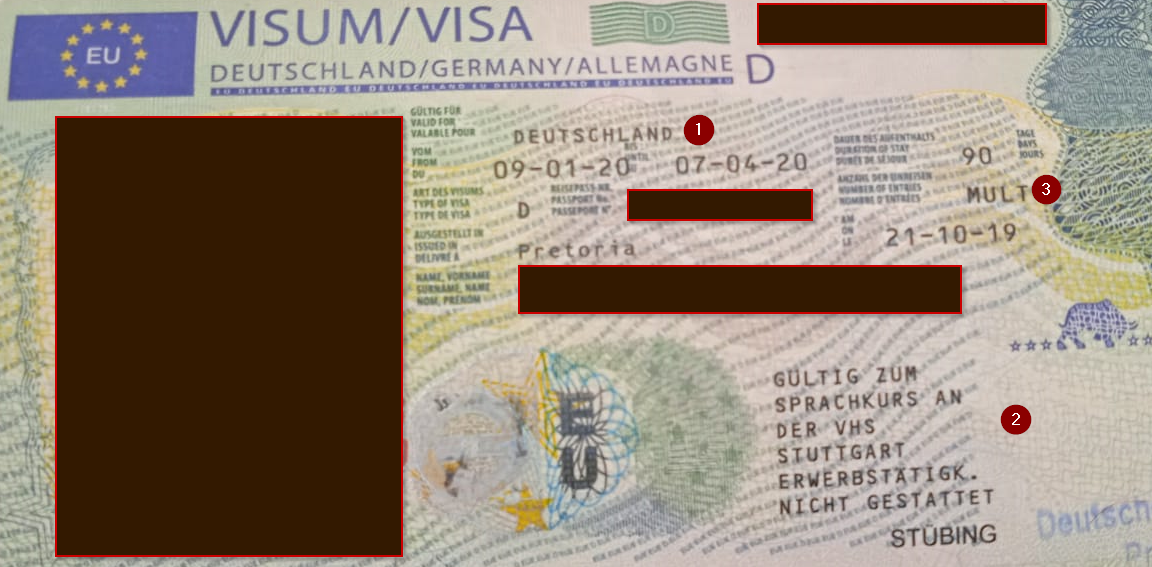
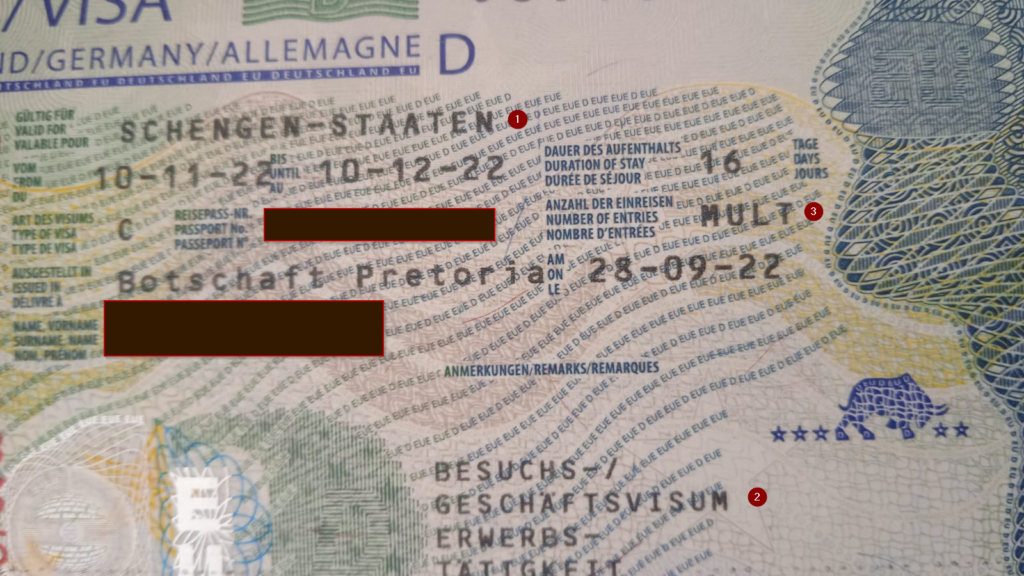
Good to know
- If your visa is only valid for Germany and single entry, you are not allowed to return to Germany once you leave on the same visa.
- If your visa is valid for the “Schengen-Staaten” and single entry, you are allowed to travel within the Schengen area, but once you leave the Schengen area you cannot return on the same visa
- If your visa is valid for the “Schengen-Staaten” and multiple entry you can leave and enter the Schengen area for as long as your visa is valid, keeping the 90/180 rule in mind.
Things to keep in mind
- It is advisable to always have your passport and visa/residence card with you.
- Even if you have a permanent residence card for Germany, for countries outside the Schengen area, you will need to adhere to the rules applicable to your passport. See Where can I travel on my SA passport for some visa exemptions.
- Switzerland is part of the Schengen area.
- Andorra, San Marino, Monaco, and the Vatican have opened their borders but are not members of the visa-free zone.
- The Azores, Madeira, and the Canary Islands are special members of the EU and part of the Schengen Zone, even though they are located outside the European continent.
- In many European countries, highways, expressways, bridges or tunnels may be subjected to Maut (Tollfees) – see the ADAC site. You can buy a Vignette before your trip, or when arriving at the toll gates.
For Austria, you can buy a Vignette directly on the ASFINAG site if you travel in your car. You cannot buy a Vignette in advance for a rental car because you to know the registration number.

Where can I travel with my SA passport
The general rule is that the entry requirements for a country are determined by your passport. Attention South African passport holders with a Schengen visa, temporary or permanent residence in Germany, do not have the same travel privileges as an EU citizen. When you have a multi-entry Schengen Visa, a German Aufenthaltstitel (Temporary Residence permit) without any restrictions, or Schengen permanent

Traveling to the UK
If you only have a South African passport, you need a visa to visit the UK, it does not matter if you have Permanent residence in Germany. Your German Residence allows you to travel inside the Schengen area. There are no special rules if you are married to a German or other EU citizen. You still travel on your own passport.
Mobile phone roaming
There are no additional charges to use your mobile phone when travelling between EU countries.
This is known as “Roam like at home” All your mobile charges will be the same as your domestic rate.
More information on the ÝourEurope website.
There are of course exemptions, for example, a limit on your inclusive data, for more information see the Verbraucherzentrale website.
You can also read more on Mobile service providers’ websites, for example, Vodafone
Travel agencies and accommodation
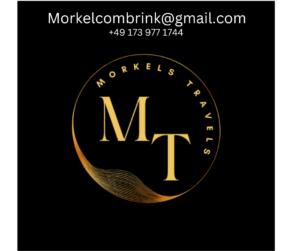
Morkel’s Travels
Founded in 2014, Travelor started as a unique startup that cracked down on the method of lowering vacation prices around the world using social power.

AKTIV Tours South Africa (German and English)
Aktiv Tours is owned by Dominic Rustemeyer Embark on exhilarating journeys led by me, your ultimate adventure companion! With a passion for exploration and

Casal’terra Villa
Soak up the peace and tranquility of this mountainside retreat. Set deep in the hills of the Tuscan countryside on a rivers edge minutes away

Little Africa
We are a South-African / German / British family and are renting out 2 guest rooms in our big house. We would love to host you
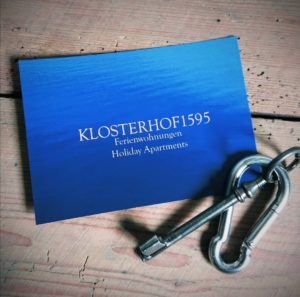
Ferienwohnungen Klosterhof1595
We have 3 Holiday Apartments situated in a historical building built in 1595, fully renovated in 2017 in Sipplingen at Lake Constance. Each apartment has

Mon Voyage Travel and Tours
Mon Voyage Travel and Tours is an IATA and ASATA accredited Travel Agency based in Port Elizabeth, South Africa Waiting, willing and ready to assist

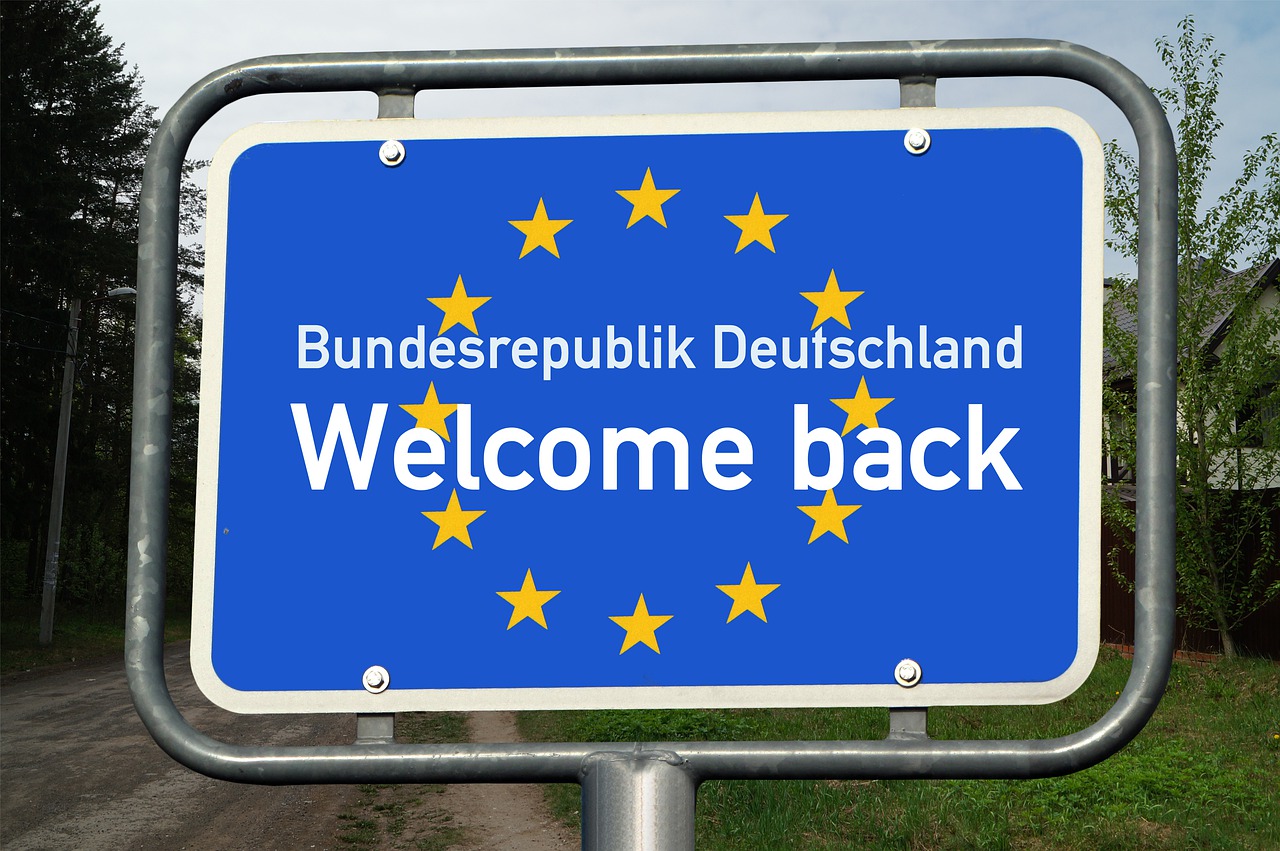
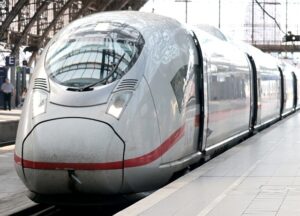



You must be logged in to post a comment.